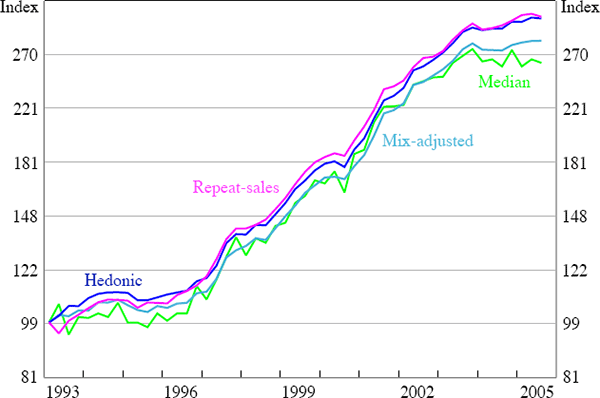RDP 2006-03: Australian House Prices: A Comparison of Hedonic and Repeat-sales Measures Appendix D: REIV Comparison
May 2006
- Download the Paper 177KB
The Real Estate Institute of Victoria (REIV) supplied house-record data for Melbourne (approximately 350,000 observations). The advantage of using REIV data is that it includes information on the street number of the house sold, which allows a repeat-sales measure to be constructed. It also contains more detailed house characteristics data allowing analysis of potentially richer hedonic specifications. While this may be an avenue for further research, I focus on using REIV data to compare the preferred hedonic and repeat-sales measures with a mix-adjusted and median measure.
Figure D1 highlights that the regression-based measures using REIV data are qualitatively similar, as in the case of these same measures based on APM data (Figure 3). In particular, the hedonic and repeat-sales measures follow each other closely, and imply a less volatile and higher path of pure prices growth over time when compared with the median. The mix-adjusted measure based on REIV data follows the median relatively closely, suggesting that it provides less of an adjustment for compositional change than in the case of measures based on APM data.

Sources: REIV; author's calculations